
| Joseph's Coat Moth (one synonym : Agarista picta Leach, 1814) AGARISTINAE, NOCTUIDAE, NOCTUOIDEA | (donherbisonevans@yahoo.com) and Stella Crossley |
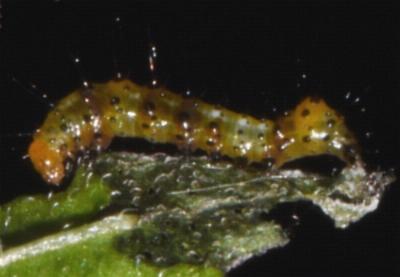
early instar, magnified
(Photo: courtesy of
Peter Hendry,
Sheldon, Queensland)

| Joseph's Coat Moth (one synonym : Agarista picta Leach, 1814) AGARISTINAE, NOCTUIDAE, NOCTUOIDEA | (donherbisonevans@yahoo.com) and Stella Crossley |

early instar, magnified
(Photo: courtesy of
Peter Hendry,
Sheldon, Queensland)
The Caterpillars of this species initially are brown and green with sparse spiky hairs. Later instars develop black and white alternating bands along the body, with deep orange bands on the mesothorax and on the last abdominal segment. The caterpillars at this stage have sparse black hairs with white club tips, and the head and feet become orange.
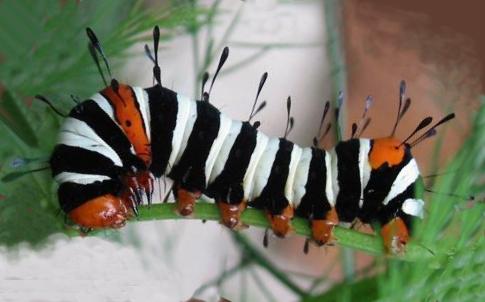
The caterpillars feed on various vines from the VITACEAE family:
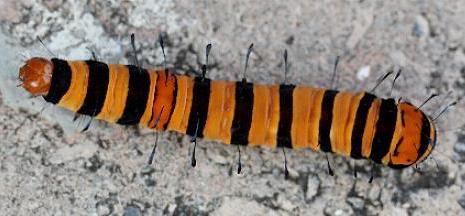
The white bands change to orange in later instars, before pupation. The caterpillars grow to a length up to 7 cms.
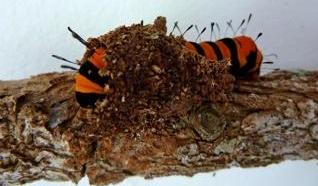 |
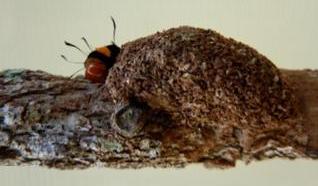 |
 |
The caterpillars usually pupate in a cocoon on a branch. They spend hours chewing bark into small pieces with which they cover their cocoon as it is formed.
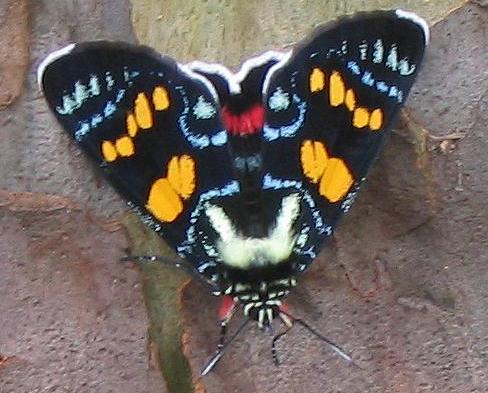
The adult moths are black with red, white, blue, and yellow patches. They often rest on vertical surfaces with head downward.
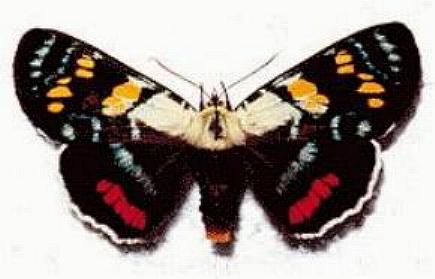
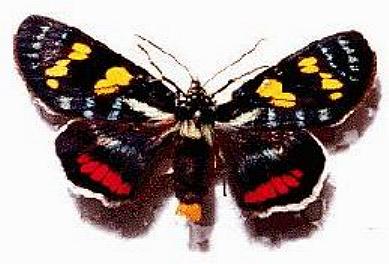
Male: wingspan 5 cms.
(Specimens: courtesy of the
The Australian Museum)
The females are larger and have a large white area at the base of each forewing.
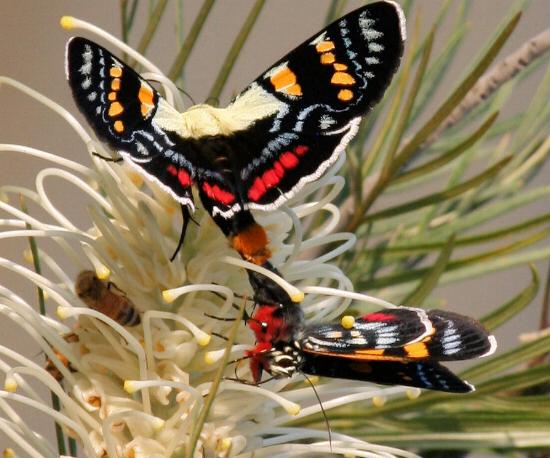
The moths often fly in the daytime, leading observers to think they are butterflies. When resting, they often face downwards.
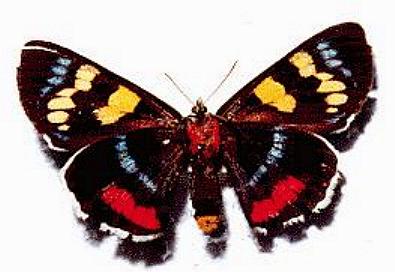
The species has been found in:
and is also found in Australia in:
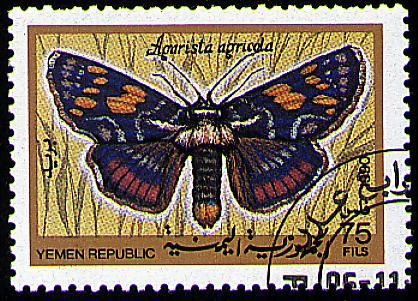
Further reading :
David Carter,
Butterflies and Moths,
Collins Eyewitness Handbooks, Sydney 1992, p. 266.
Ian F.B. Common,
Moths of Australia,
Melbourne University Press, 1990, p. 464.
Edward Donovan,
General Illustration of Entomology,
An Epitome of the Natural History of the Insects of
New Holland, New Zealand, New Guinea, Otaheite and other
Islands in the Indian, Southern and Pacific Oceans,
London (1805), p. 145, and also
Plate on p. 144.
Amanda Johnston,
From a Wetland Garden,
Butterflies and Other Invertebrates Club,
Metamorphosis Australia,
Issue 62 (September 2011), pp. 21-22.
Lois Hughes,
Joseph's Coat Moth (Agarista agricola),
Butterflies and Other Invertebrates Club,
Metamorphosis Australia,
Issue 55 (December 2009), pp. 1, 4-5.
Lois Hughes,
In the garden,
Butterflies and Other Invertebrates Club,
Metamorphosis Australia,
Issue 78 (September 2015), pp. 37-38.
 caterpillar |  butterflies |  Lepidoptera |  moths |  caterpillar |
(updated 12 October 2012, 5 July 2024)